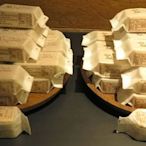搜尋結果
 $29全新,微熱山丘帆布環保包裝袋歡迎來淘寶,運費可合併
$29全新,微熱山丘帆布環保包裝袋歡迎來淘寶,運費可合併 $1400台灣 八卦山 土鳯梨 餡 (大包裝) 微熱山丘 口味 有纖維 酸甜不膩口 3kg 5台斤 裝 *水蘋果* U-103水蘋果-烘焙用具、手工皂
$1400台灣 八卦山 土鳯梨 餡 (大包裝) 微熱山丘 口味 有纖維 酸甜不膩口 3kg 5台斤 裝 *水蘋果* U-103水蘋果-烘焙用具、手工皂 $560微熱山丘土鳳梨酥10入禮盒(附麻布袋)kevin1588
$560微熱山丘土鳳梨酥10入禮盒(附麻布袋)kevin1588 $550(代購)南投微熱山丘土鳳梨酥~10入/15入(一盒)經濟實惠@優質賣場
$550(代購)南投微熱山丘土鳳梨酥~10入/15入(一盒)經濟實惠@優質賣場![台灣 八卦山 土鳯梨 餡 微熱山丘 口味 有纖維 酸甜不膩口 600g 裝 *水蘋果* U-050 台灣 八卦山 土鳯梨 餡 微熱山丘 口味 有纖維 酸甜不膩口 600g 裝 *水蘋果* U-050]() $290台灣 八卦山 土鳯梨 餡 微熱山丘 口味 有纖維 酸甜不膩口 600g 裝 *水蘋果* U-050水蘋果-烘焙用具、手工皂
$290台灣 八卦山 土鳯梨 餡 微熱山丘 口味 有纖維 酸甜不膩口 600g 裝 *水蘋果* U-050水蘋果-烘焙用具、手工皂![微熱山丘鳳梨酥模 土鳳梨酥模 長方造型餅乾模~MJ的窩~ 微熱山丘鳳梨酥模 土鳳梨酥模 長方造型餅乾模~MJ的窩~]() $10微熱山丘鳳梨酥模 土鳳梨酥模 長方造型餅乾模~MJ的窩~MJ的窩
$10微熱山丘鳳梨酥模 土鳳梨酥模 長方造型餅乾模~MJ的窩~MJ的窩![微熱山丘鳳梨酥 微熱山丘鳳梨酥]() $550微熱山丘鳳梨酥Y5067885602
$550微熱山丘鳳梨酥Y5067885602![微熱山丘 蘋果酥/10入裝 下單後才代購最新鮮! 微熱山丘 蘋果酥/10入裝 下單後才代購最新鮮!]() $620微熱山丘 蘋果酥/10入裝 下單後才代購最新鮮!好貨
$620微熱山丘 蘋果酥/10入裝 下單後才代購最新鮮!好貨![全新 現貨 微熱山丘 直式 小環保提袋 (69元) 全新 現貨 微熱山丘 直式 小環保提袋 (69元)]() $69全新 現貨 微熱山丘 直式 小環保提袋 (69元)jrkuo(星情心情)
$69全新 現貨 微熱山丘 直式 小環保提袋 (69元)jrkuo(星情心情)![~微熱山丘 直式 環保提袋(小) 18.2x31.2cm~ ~微熱山丘 直式 環保提袋(小) 18.2x31.2cm~]() $65~微熱山丘 直式 環保提袋(小) 18.2x31.2cm~Fancis 下標前請看關於我
$65~微熱山丘 直式 環保提袋(小) 18.2x31.2cm~Fancis 下標前請看關於我![微熱山丘 鳳梨酥/10入裝 下單後才代購最新鮮! 微熱山丘 鳳梨酥/10入裝 下單後才代購最新鮮!]() $519微熱山丘 鳳梨酥/10入裝 下單後才代購最新鮮!好貨
$519微熱山丘 鳳梨酥/10入裝 下單後才代購最新鮮!好貨![(代購)南投微熱山丘土鳳梨酥 10入 / 15入一盒 (代購)南投微熱山丘土鳳梨酥 10入 / 15入一盒]() $550(代購)南投微熱山丘土鳳梨酥 10入 / 15入一盒優 值 小 舖
$550(代購)南投微熱山丘土鳳梨酥 10入 / 15入一盒優 值 小 舖
The micrometre (Commonwealth English) as used by the International Bureau of Weights and Measures; SI symbol: μm) or micrometer (American English), also commonly known by the non-SI term micron, is a unit of length in the International System of Units (SI) equalling 1 × 10 −6 metre (SI standard prefix "micro-" = 10 −6); that is, one millionth of a metre (or one thousandth of a millimetre ...
A thermophile is an organism—a type of extremophile —that thrives at relatively high temperatures, between 41 and 122 °C (106 and 252 °F). [1] [2] Many thermophiles are archaea, though some of them are bacteria and fungi. Thermophilic eubacteria are suggested to have been among the earliest bacteria. [3]
Top: Lightning and neon lights are commonplace generators of plasma. Bottom left: A plasma globe, illustrating some of the more complex plasma phenomena, including filamentation. Bottom right: A plasma trail from the Space Shuttle Atlantis during re-entry into Earth's atmosphere, as seen from the International Space Station. Plasma (from ...
In electronics, the metal–oxide–semiconductor field-effect transistor ( MOSFET, MOS-FET, or MOS FET) is a type of field-effect transistor (FET), most commonly fabricated by the controlled oxidation of silicon. It has an insulated gate, the voltage of which determines the conductivity of the device.
Polytetrafluoroethylene is a fluorocarbon solid, as it is a high- molecular-weight polymer consisting wholly of carbon and fluorine. PTFE is hydrophobic: neither water nor water-containing substances wet PTFE, as fluorocarbons exhibit only small London dispersion forces due to the low electric polarizability of fluorine.
Scientists have conducted morphological and molecular studies to understand how tardigrades relate to other lineages of ecdysozoan animals. Two plausible placements have been proposed: tardigrades are either most closely related to Arthropoda and Onychophora, or to nematodes..
New Caledonia (/ˌkælɪˈdoʊniə/ ⓘ KAL-ih-DOH-nee-ə; French: Nouvelle-Calédonie [nuvɛl kaledɔni] ⓘ)[nb 2] is a sui generis collectivity of overseas France in the southwest Pacific Ocean, south of Vanuatu, about 1,210 km (750 mi) east of Australia,[5] and 17,000 km (11,000 mi) from Metropolitan France. The archipelago, part of the ...










